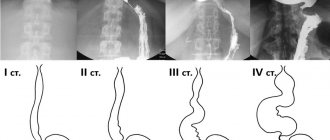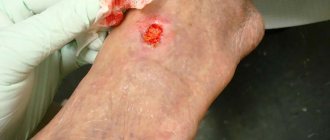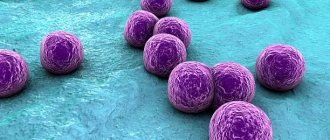Development of rheumatoid arthritis
Arthritis
is a general term that refers to various types of inflammation and destructive processes occurring inside the joint. Rheumatoid arthritis belongs to the category of autoimmune diseases and involves the progression of inflammatory processes in the joint, the occurrence of which is caused by tissue damage by immune cells for various reasons, attacking the tissues of the body's own.
Inflammatory processes involve degeneration (destruction) of cartilage and further breakdown of bone tissue. Due to the fact that cartilage tissue, as a rule, is not restored, and bone tissue is deformed, during the development of rheumatoid lesions, almost irreversible consequences arise (deformation of joints, a significant decrease in mobility).
Frequent and at the same time severe pain and, as a consequence, inactivity in the absence of treatment inevitably lead to disability of patients.
Types of the disease depending on the course
Slowly progressive rheumatoid arthritis means that the disease develops over many years, gradually affecting the joints. The joints themselves do not suffer very much. This is where treatment helps and you can maintain a fairly comfortable standard of living.
The rapidly progressing type is characterized by frequent and severe exacerbations, joint damage is severe, treatment helps little. A person's quality of life deteriorates noticeably.
The simplest and easiest type for the patient is a disease without noticeable progression. You can live with it until you are very old without particularly suffering from symptoms.
Causes of rheumatoid arthritis
Scientists around the world are working to identify the most likely causes of rheumatoid arthritis.
Today, most experts are of the opinion that rheumatoid arthritis is a multifactorial disease, which suggests its development in the presence of a complex of diverse causes.
Possible prerequisites for the occurrence of rheumatoid arthritis may include:
- genetics, namely, a predisposition to disorders of the immune system (antigens have been identified that can lead to the transformation of humoral and cellular immunity);
- the presence in the body of infectious agents that can cause various types of immune changes (more than half of the diagnosed patients have elevated levels of antibodies to the Epstein-Barr virus).
The trigger factors that provoke the appearance of rheumatoid arthritis include:
- hypothermia;
- increased exposure to ultraviolet radiation (prolonged exposure to sunlight);
- intoxication (in particular microbial toxins);
- previous bacterial infections;
- the influence of certain medications;
- disruption of the endocrine system;
- emotional shock.
At the same time, there is an interesting fact that breastfeeding for two or more years significantly reduces the likelihood of developing the disease.
Pathogenesis of seropositive arthritis
Pathogenesis of seropositive arthritis
The mechanism of development of seropositive arthritis (pathogenesis) is associated with a breakdown of the immune system. It develops this way:
- Normally, the body produces antibodies in response to infection; these are protein compounds - immunoglobulins (Ig), the purpose of which is to connect with an infectious pathogen (antigen) and neutralize it;
- in RA, altered Igs are produced, the immune system does not recognize them, mistakes them for foreign particles (antigen) and produces antibodies to them, which are called rheumatoid factor (RF); the resulting antigen-antibody complexes are deposited in tissues, maintaining inflammation and destroying articular surfaces;
- inflammation and tissue damage are also maintained and progressed due to the production of excess amounts of pro-inflammatory (inflammation-supporting) cytokines - molecules that normally transmit information and regulate inflammatory reactions along with anti-inflammatory cytokines.
In the seropositive form of arthritis, rheumatoid factor is detected in the blood, and in the seronegative form it is either absent or present in insignificant quantities. Why this happens has not been established.
The inflammatory process first causes swelling of the periarticular tissues, including the inner surface of the joint capsule, the synovial membrane, becoming inflamed and swollen. The next stage is the growth of connective tissue cells in it - pannus. The pannus covers the articular surfaces of the bones, destroys cartilage and bone tissue, then grows into the joint space and closes with the opposite side, making the joint immobile (ankylosis).
Main signs and symptoms of rheumatoid arthritis
The first signs of rheumatoid arthritis are morning stiffness in joint movement, accompanied by the onset of inflammatory processes.
Initially, the small joints of the limbs are at risk of tissue resolution, which leads to the appearance of such signs of rheumatoid arthritis as the feeling of spending the night in a corset or tight gloves.
In the initial stage of the disease, the pain is of moderate intensity, but quite noticeable and sometimes comparable to toothache. It is difficult to touch the joints, any perfect movement greatly intensifies the sensation, which forces you to initially take the most comfortable positions.
The initial symptoms of rheumatoid arthritis may persist for a long period of time.
Late stages of development are accompanied by such a sign of rheumatoid arthritis as visually noticeable deformation of the joints. It is worth noting that during this period it is difficult for a person to perform simple household operations, which significantly reduces the quality of life.
In order to simplify the determination of treatment, all symptoms of rheumatoid arthritis are usually classified into two groups:
- Extra-articular manifestations – signal disturbances in the functioning of internal organs:
- decrease in muscle mass;
- thinning and dry skin;
- deformation and fragility of the nail plate;
- hemorrhages on the skin, internal bleeding;
- inflammation and enlargement of lymph nodes.
- Joint manifestations indicate the development of degenerative-dystrophic processes in the joints:
- symmetrical damage to small joints;
- visually noticeable development of the disease (swelling, stiffness, local increase in temperature);
- the appearance of boring pain.
Symptoms
The initial stage of the disease has virtually no obvious symptoms. Over time, slight stiffness appears in the affected joints. As a rule, it occurs in the morning, as the secretion of glucocorticoids decreases. It is difficult for the patient to move, movements are inhibited. Sometimes you need help getting up. But after 30 minutes - an hour everything returns to normal. The clinic can be rolled out over several months or even years, gradually intensifying.
Primary symptoms also include:
- periodic joint pain;
- loss of appetite;
- increased fatigue.
Second stage
characterized by rapid cell division and thickening of the synovial membrane. There is symmetrical swelling of the joints, the skin in the affected areas has an increased temperature. Sudden pain is also observed, intensifying with active movement. To complete the process, they need the same amount of rest time that was spent moving.
Third stage
― active phase of inflammation involving cartilage and bones. The affected joints begin to deform, which leads to increased pain and loss of motor function.
Rheumatoid arthritis often has concomitant joint diseases, and vague symptoms make differential diagnosis difficult. Among the most beneficial combinations are rheumatism, osteoarthritis and other systemic pathologies of connective tissue. The only specific manifestation of rheumatoid arthritis can be called nodules, so-called subcutaneous formations on the extensor surface. They can be detected by palpation.
Extra-articular manifestations of RA
Pathological processes caused by rheumatoid arthritis that occur outside the joints occur in a third of patients. These symptoms also complicate diagnosis and influence the choice of treatment tactics. Among them:
- Cutaneous vasculitis (ulcerative-necrotic, livedoangiitis, infarction of the nail bed).
- Sjogren's syndrome (damage to the salivary and lacrimal glands).
- Eye lesions (scleritis - inflammation of the deep layer of the eye, episcleritis - inflammation of the connective tissue of the eye).
- Interstitial lung disease (inflammation of the alveoli, pulmonary capillaries and other tissues).
As a result of inflammation accompanying rheumatoid arthritis, pathologies of the cardiovascular, respiratory, and nervous systems may occur. The most serious complication is AA amyloidosis, which causes kidney failure.
Separately, it is worth highlighting various associated diseases that are not directly caused, but are associated with RA. These are coronary heart disease, thromboembolism, anemia, psychoneurological disorders, among which depression deserves attention. Like any other autoimmune disease with chronic inflammation, rheumatoid arthritis affects psychological well-being. The patient is recommended to undergo psychological courses and a comprehensive, comprehensive examination.
Possible complications of the disease
If you do not seek qualified help in a timely manner, as well as without treatment for rheumatoid arthritis, there is a high probability of complications, including:
- heart failure/myocardial infarction;
- renal failure;
- violation of metabolic processes;
- inflammation of the serous membranes of internal organs;
- the occurrence of bronchopleural fistulas (a direct channel between the bronchial tree and the pleural cavity).
Treatment methods
Comprehensive treatment of seropositive rheumatoid arthritis is carried out. No pharmacological drugs have yet been synthesized to cope with the disease. Therefore, the main goals of treatment are to improve the patient’s well-being and achieve stable remission. To reduce the severity of pain and eliminate inflammatory edema, the following are used:
- glucocorticosteroids - Triamcinolone, Hydrocortisone, Diprospan, Kenalog, Dexamethasone. Inflamed connective tissue structures are injected into the joint cavity along with anesthetics. They quickly stop inflammatory processes, eliminating pain and swelling. Not intended for frequent drug blockades due to severe side effects - damage to the mucous membranes of the gastrointestinal tract, liver, kidneys, loss of bone tissue;
- nonsteroidal anti-inflammatory drugs (NSAIDs) - Ketoprofen, Ibuprofen, Diclofenac, Nimesulide, Celecoxib. To relieve acute pain, they are used in the form of intramuscular injections. Moderate pain syndrome can be managed by taking a course of tablets along with proton pump inhibitors (Omeprazole, Rabeprazole, Pantoprazole). Discomfortable sensations at the remission stage are eliminated by NSAIDs for local application (Voltaren, Fastum, Nurofen, Nise, Dolgit).
To suppress excessive activity of the immune system, biological drugs Sulfosalazine, Methotrexate, Arava, Remicade, which have immunosuppressive and cytostatic effects, are included in therapeutic regimens. Relatively new drugs used in the treatment of seropositive rheumatoid arthritis are biological drugs, blockers of proinflammatory cytokine protein. By inhibiting this tumor necrosis factor with Etanercept, Infliximab, and Adalimumab, stable remission of RA is achieved.
With the development of complications or rapid progression of pathology, patients are prescribed correction of blood composition using cryoapheresis, membrane plasmapheresis, extracorporeal pharmacotherapy, and cascade plasma filtration. To strengthen the muscle corset, improve blood circulation and tissue trophism, patients are prescribed massage and physiotherapeutic procedures (UHF therapy, magnetic therapy, laser therapy), exercise therapy, and balneotherapy. The effectiveness of therapeutic measures is much higher when the patient seeks medical help when the first signs of seropositive rheumatoid arthritis appear.
Classification of rheumatoid arthritis
The development of rheumatoid arthritis is classified into stages. It is important that in the early stages the disease can be quite successfully treated with medications, but in the later stages they may be ineffective. The prognosis of disability depends on the stage of the disease.
In addition to the clinical ones, there are also radiological stages of rheumatoid arthritis. Let's look at it in detail.
First stage (initial)
It proceeds quite favorably and practically does not manifest itself in any way. As a rule, there are no painful sensations, the general condition of the body is satisfactory.
It is almost impossible to identify the disease on your own.
The main symptoms of early stage rheumatoid arthritis are:
- discomfort in the joints, barely noticeable pain;
- compaction with a finger (visually noticeable thickening);
- compaction of periarticular tissues;
- stiffness of movement mainly in the morning.
X-ray manifestations:
- thinning of bone tissue;
- extremely rarely - the formation of light areas on the affected tissue.
Treatment for early-stage rheumatoid arthritis is quite simple, and the prognosis is favorable.
Second stage
It has a more pronounced clinical picture. Diagnosis of rheumatoid arthritis is carried out mainly at this stage.
Among the most pronounced symptoms of rheumatoid arthritis of the second stage are:
- damage to several groups of joints at once;
- the occurrence of quite severe pain, which weakens with active movements and stress;
- feeling of stiffness, as if “the body has gone numb”;
- visually noticeable changes (local redness of the skin).
X-ray manifestations:
- changes in bone tissue according to the type of erosion;
- cartilage deformation;
- swelling and inflammation of the joint capsule.
Treatment of stage 2 rheumatoid arthritis is predominantly medicinal. The prognosis is favorable.
Third stage
Characterized by serious changes. There are pronounced pains and limited joint mobility.
Signs of stage three rheumatoid arthritis are:
- spread of the disease to large joints of the body;
- local increase in temperature, feeling of heat;
- formation of subcutaneous nodules (mainly near the affected joints);
- noticeable deformation of cartilage tissue;
- muscle atrophy, loss of joint mobility.
X-ray manifestations:
- thinning of bone tissue, the occurrence of erosions;
- noticeable atrophy of the muscular frame;
- joint deformation;
- salt deposits, as well as calcification of joints.
Treatment of rheumatoid arthritis at this stage is carried out only in a hospital setting. The prognosis is conditionally unfavorable.
Fourth (terminal) stage
An extremely severe course of the disease, accompanied by a large number of complications.
Diagnosis of rheumatoid arthritis at this stage determines such signs as:
- severe pain that prevents rest;
- pain in the eye sockets, chest discomfort;
- partial or complete loss of sensation in the limbs;
- significant decrease in motor activity;
- spread of the inflammatory process to large muscles;
- gastrointestinal tract damage;
- the occurrence of a large number of ulcers/rashes.
X-ray manifestations:
- obviously noticeable osteoporosis;
- many erosions/cysts;
- tissue fusion;
- total deformation (not subject to restoration).
Treatment of stage four rheumatoid arthritis is only in a hospital setting. The prognosis is extremely unfavorable.
Degrees of development
The extent to which the insufficiency of the musculoskeletal system manifests itself depends on the degree. There are 4 stages, including zero:
- zero. The patient takes care of himself independently, his life practically does not change;
- first. Due to joint problems, not all movements are available to the patient. Some professional activities are already excluded;
- second. At this stage, a person loses his professional ability to work;
- third. The most difficult degree assumes that the patient does not have the ability to independently care for himself even in everyday life one hundred percent.
Obviously, when combined with other diseases, the situation at each stage becomes significantly more complicated.
Diagnosis of rheumatoid arthritis
You should go for a diagnosis of rheumatoid arthritis if the following symptoms occur:
- painful symmetrical swelling/edema of several joints;
- the occurrence of morning stiffness;
- presence of subcutaneous nodules;
- changes on the radiograph (detection of osteoporosis/erosions/cysts).
In order to clarify the suspected diagnosis, the following methods are used:
- MRI (magnetic resonance imaging) – makes it possible to determine the condition of the periarticular tissues;
- puncture (extracting a sample of joint (synovial) fluid) - helps determine the presence of specific cells and leukocytes.
Diagnostics
Diagnosis of rheumatoid arthritis includes a comprehensive study. It consists of laboratory and instrumental methods. The examination is aimed at determining the localization of the pathological process and the extent of its prevalence. Diagnostic measures include:
- Visual inspection of joints;
- Blood test;
- X-ray examination;
- Ultrasound examination (ultrasound);
- Magnetic resonance imaging (MRI).
When examining joints, you can identify signs of synovitis - inflammation of the synovial membranes of the joint. It is manifested by swelling and redness of the skin over the joint.
Synovitis is an inflammatory condition in which there is swelling of the joint. Against the background of the pathological process, body temperature rises and pain occurs, which intensifies with movement. In rheumatoid arthritis, synovitis usually affects several joints.
It is difficult to determine the exact list of laboratory tests that will allow you to diagnose rheumatoid arthritis. Doctors identify several indicators, the increase of which makes one suspect the development of the disease. Among them:
- Rheumatoid factor (RF);
- ESR;
- C-reactive protein (CRP);
- Antibodies to cyclic citrullinated peptide.
Blood test data are not specific. Instrumental research methods make it possible to determine the stage of the disease if laboratory diagnostic methods provide insufficient information. The main imaging tests for rheumatoid arthritis include:
- Ultrasound. Used to identify the inflammatory process in the synovium. This symptom is characteristic of the initial stage of development of the disease. Therefore, ultrasound makes it possible to diagnose rheumatoid arthritis at an early stage of the disease;
- Radiography. Used to identify violations of the integrity of the bone structure as a result of long-term development of rheumatoid arthritis. In this regard, in the early stages of the disease, this diagnostic method will be less informative;
- MRI. The most modern and common way to study joint damage. With the help of magnetic resonance imaging, it is possible to determine the extent of the spread of the pathological process and its localization. Used in cases where the 2 previous methods were uninformative.
Physical examination and patient history
Diagnosis of rheumatoid arthritis is not complete without a physical examination of the patient and finding out his medical history. The doctor carefully examines the skin and studies joint mobility. During the consultation, it is necessary to answer the following questions:
- Localization of pain;
- The nature of the pain syndrome (acute, aching, stabbing, periodic, constant);
- Presence or absence of morning stiffness;
- Characteristics of weight changes;
- Time of appearance of the first pathological symptoms;
- Dynamic change in the nature of signs;
- What measures were used to relieve symptoms.
To clarify the diagnosis and determine further treatment tactics, concomitant diseases and the therapy used are specified. The moment of clarifying hereditary burden is important.
Treatment of rheumatoid arthritis with non-drug methods
Despite the fact that the disease cannot be completely cured, fighting it makes sense and, with the right approach, gives the best possible results.
The key objective of non-drug and drug therapy is:
- elimination of symptoms;
- achieving stable and long-term remission;
- inhibiting the activity of autoimmune reactions;
- preventing or slowing down the manifestation of complications.
Physiotherapy
Physiotherapeutic methods are aimed at accelerating tissue repair/healing, as well as supporting muscle tone and maximizing joint mobility in rheumatoid arthritis.
Physiotherapy includes:
- electrophoresis/phonophoresis (exposure to electric field/ultrasound);
- balneotherapy (mineral water baths);
- mud therapy.
It is best if the therapy is carried out in an inpatient setting.
Massage
An excellent treatment method, the use of which is necessary during the period of remission of the disease. The duration of the course and the duration of the sessions are determined by the nature of the disease.
Procedures should be performed only by a professional massage therapist, after consultation with the attending physician.
Therapeutic exercise (physical therapy)
Helps maintain mobility and also locally activates metabolic processes by improving blood circulation.
The set of exercises is selected in accordance with the current stage of the disease and taking into account the recommendations of the attending physician.
Orthopedic surgeries
Possibility of restoring the functionality and structure of joints. Today the following solutions are available:
- arthroscopy is a minimally invasive intervention (involves pinpoint punctures) performed to treat joint damage;
- endoprosthetics - replacement of components or an entire joint, providing mobility.
Treatment
All patients suffering from RA should be observed and treated only by a rheumatologist. Delaying therapy for 12 months significantly reduces the likelihood of a favorable prognosis for this disease. If the diagnosis of RA is beyond doubt, basic antirheumatological drugs (DMARDs) are prescribed. Methotrexate is the drug of choice worldwide. This therapy controls the disease, prevents bone deformities, improves the quality of life of patients and the prognosis of the disease. Drugs such as leflunomide (Arava), sulfasalazine, and hydroxychloroquine are also used. The choice of drug is determined only by a rheumatologist individually for each patient, taking into account the degree of disease activity, concomitant pathology, tolerability and effectiveness of previous therapy. Treatment with DMARDs is carried out indefinitely, sometimes for life, in order to prevent progression and control the disease, maintain remission or low disease activity. In some cases, with high disease activity, severe disease, and the impossibility, for a number of reasons, of taking high adequate doses of DMARDs, a rheumatologist may prescribe glucocorticosteroid drugs (GCS), which have a powerful and rapid anti-inflammatory effect. In case of ineffectiveness, poor tolerability of DMARDs, or the presence of risk factors for poor prognosis of RA, a decision is made to prescribe genetically engineered biological drugs (GEBD) to the patient. The effectiveness and tolerability of this therapy is assessed by a rheumatologist, who also determines its duration. In addition to drug therapy, patients suffering from RA are required to perform daily physical therapy (PT), which is not contraindicated even with high disease activity. The patient can begin performing exercise therapy in a group or individually with an instructor, and then continue independently at home. For patients with RA without disease activity, various methods of physiotherapy, massage of the affected limbs, hydrotherapy - baths, showers, etc. are also indicated.
In the later stages of the disease, with inadequate or late therapy, or with an aggressive course of the disease, surgical treatment methods that restore the function of the limbs are sometimes necessary. Types of surgical correction for RA are synovectomy (removal of the synovial membrane of the affected joint), reconstructive surgery on bones, ligaments, tendons of large and small joints (plasty), as well as endoprosthetics.
At the Clinic of High Medical Technologies named after. N.I. Pirogov, if RA is suspected, patients, after examination by a rheumatologist, can undergo a full examination, including all laboratory tests, Rg of joints, if necessary, MRI of joints and other methods of examining internal organs if indicated. The rheumatologist will prescribe adequate therapy and will subsequently evaluate the effectiveness and tolerability of treatment and dynamic monitoring of the patient. Also in our institution, patients can get advice from a physiotherapist and exercise therapy doctor, and, if there are indications and no contraindications, undergo various types of physical therapy, massage, etc. After a qualified consultation with an orthopedist-traumatologist, together with a rheumatologist and doctors of other specialties, patients, taking into account the indications for surgical treatment of joints, various types of surgical interventions are performed.
Treatment of rheumatoid arthritis with drugs
How to treat rheumatoid arthritis using medications can only be determined by the attending physician who has a complete clinical picture of the patient’s disease.
Treatment of rheumatoid arthritis with drugs is carried out under the close supervision of a specialist and is adjusted in accordance with the existing/absent progress.
Chondroprotectors
A wide group of drugs that promote the regeneration of connective tissue and improve the condition of cartilage. Available in various forms (tablets/ointments).
Frequently prescribed ones include: “Artracam”, “Mukosat”, “Chondrolone”.
Antispasmodics
Helps relieve spasms of smooth muscles surrounding inflamed joints.
The most effective are “Spazmalgon”, “Trigan”, “Maxigan”.
Nonsteroidal anti-inflammatory drugs (NSAIDs)
They have an anti-inflammatory effect and help inhibit the activity of the enzyme that causes destructive processes. The most commonly prescribed and at the same time very effective drug is Artradol.
Biological agents
Protein-based drugs. The key purpose is to suppress inflammatory processes due to its effect on the components of the immune system.
The most effective are: “Halofuginon”, “Humira”, “Orencia”.
Classification
According to ICD-10, the disease is systematized into the following groups:
1. Seropositive RA:
- Felty's syndrome.
- RA with involvement of other organs and systems.
- Unspecified forms.
2. Youth RA.
3. Other RAs:
- Seronegative type.
- Still's disease.
- Rheumatoid bursitis.
- Rheumatoid nodule.
- Other specified and unspecified arthritis.
According to clinical manifestations, the disease is divided into the primary stage (less than 6 months have passed since the onset of the disease), early (from 6 months to a year), advanced (from 1 year) and late (more than 2 years). Rheumatoid arthritis is distinguished by the degree of loss of functionality, immunological factors, disease activity, and instrumental characteristics.
For doctors, immunological characteristics are of greatest importance. The presence of rheumatoid factor in the blood or the presence of anti-CCP (seropositive and seronegative RA). The results of tests that reveal these values allow you to correctly plan therapy.
Nutrition
Compliance with the principles of a healthy diet helps to consolidate the favorable results of successful treatment and maintain remission for as long as possible. A diet for rheumatoid arthritis and a transition predominantly to plant foods helps to significantly reduce the exacerbations that occur.
How to treat rheumatoid arthritis with diet? Experts recommend eliminating allergenic foods (for example, tomatoes and eggplants), as well as introducing more vitamins and animal proteins, which helps reduce muscle loss. Preference should be given to lean meats, as well as sea fish and baked foods.
In addition, it is recommended to give up bad habits, since any intoxication can provoke an exacerbation.
Pathogenesis
Normally, the human immune system produces antibodies (proteins) that help the body fight, destroy viruses, bacteria and other foreign substances. In rheumatoid arthritis, the immune system produces antibodies against healthy cells and tissues of its own body, these are called autoantibodies (“auto” - its own). With arthritis, inflammation occurs inside the joint: the synovium thickens, which can lead to swelling of the joint. The swollen synovium turns into a dense mass called “pannus”. As the pannus grows, the articular cartilage begins to be damaged, leading to weakening of the muscles, ligaments and tendons. Against the background of persistent inflammation, the bones that form the joint are destroyed. In severe RA, the distal bones may come into contact and partially fuse, causing what is called ankylosis, in which the joint begins to lose its function. Persistent deformities can form (the so-called “boutonniere”, “swan neck”), and the patient’s functional ability and quality of life decrease.
Approach to the treatment of seropositive arthritis in our clinic
We combine proven techniques of the East and innovative methods of Western medicine.
Read more about our unique method of treating arthritis
Specialists at the Paramita clinic in Moscow have extensive experience in treating seropositive rheumatoid arthritis. A patient who seeks help for the first time is first given a full examination and only then is prescribed a course of therapy, the peculiarity of which is a combination of the most modern Western and traditional Eastern, time-tested techniques. Treatment measures are selected for each patient strictly individually. Their effectiveness is periodically assessed. Our methods (how we treat):
- drug therapy with the inclusion of the latest drugs, herbal medicine, folk and homeopathic remedies; this combination allows you to carry out the course faster, more efficiently and reduce the drug burden on the patient;
- physiotherapeutic procedures - prescribed depending on the stage of the disease and the general condition of the patient;
- kinesitherapy, taping, complexes of therapeutic exercises and medical massage - the most effective treatment methods are used to maintain limb mobility, all procedures are prescribed by a doctor and carried out under the supervision of a physical therapy instructor;
- PRP therapy is the latest method that allows you to quickly restore lost motor functions; is based on stimulating the regenerative properties of the body with the patient’s own blood platelets, processed using special techniques;
- reflexology (RT) - the impact of acupuncture, moxibustion, acupressure on acupuncture points (AP) on the body, reflexively associated with internal organs and tissues; the doctors of our clinic are proficient in all RT methods, as they were trained in China and Tibet;
- pharmacopuncture – introduction of modern highly effective drugs into AT.
Treatment of seropositive arthritis in the clinic
Doctors at our clinic not only relieve, but also prevent exacerbation of seropositive arthritis by regularly carrying out anti-relapse measures. As a result, patients are free from exacerbations for a long time and have a high level of quality of life.
Prevention of relapses of seropositive arthritis
To live without exacerbations in a state of stable remission, the patient must:
- be aware of triggers and avoid them;
- lead a healthy lifestyle, engage in exercise therapy;
- eat properly regularly, monitor your weight;
- Be sure to regularly observe a doctor and, on his recommendation, take courses of anti-relapse therapy.
Well, if an exacerbation does begin, run to the doctor! At the Moscow clinic "Paramita" they know a lot about the treatment of seropositive rheumatoid arthritis!
Literature:
- Nasonov EL, Karateev DE, Balabanova RM. Rheumatoid arthritis. In the book. : Rheumatology. National leadership. Ed. E. L. Nasonova, V. A. Nasonova. Moscow: GEOTAR-Media; 2008. pp. 290–331.
- Nasonov E.L., Mazurov V.I., Karateev D.E. and others. Draft recommendations for the treatment of rheumatoid arthritis of the All-Russian public organization “Association of Rheumatologists of Russia” - 2014 (part 1). Scientific and Practical Rheumatology 2014;52:477–94.
- Molina JT, Garcia FJB, Alen JC, et al. Recommendations for the use of methotrexate in rheumatoid arthritis: up and down scaling of the dose and administration routes. Rheumatol Clin 2015;11:3-8.
- Tornero Molina J, Calvo Alen J, Ballina J, et al Recommendations for the use of parenteral methotrexate in rheumatology. Reumatol Clin 2021. pii: S1699-258X(16)30162-0.
- Espinosa F, Fabre S, Pers YM. Remission-induction therapies for early rheumatoid arthritis: evidence to date and clinical implications. Ther Adv Musculoskelet Dis 2016;8:107-18.
Themes
Joints, Pain, Treatment without surgery Date of publication: 04/10/2020 Date of update: 11/12/2020
Reader rating
Rating: 5 / 5 (4)









